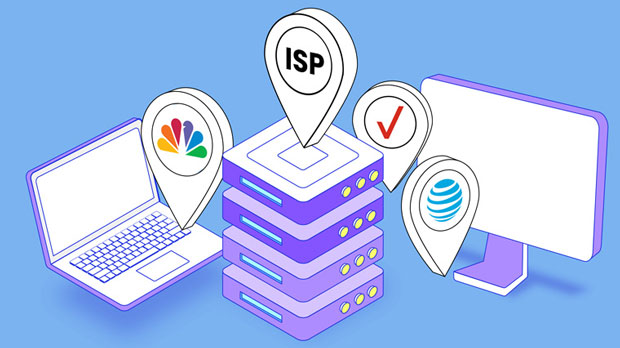residential proxies are an essential tool for online anonymity, web scraping, and bypassing geographic restrictions, especially for users seeking reliable access to UK-based content or services. However, with increasing concerns over online fraud, cyber-attacks, and data breaches, the use of residential proxies, particularly those originating from the UK, faces certain risks. This article aims to assess the potential blocking risks associated with residential proxies under residential services, focusing on the UK. We will explore the factors that contribute to the blocking of these proxies, potential solutions, and how users can mitigate these risks to ensure smooth, uninterrupted services. Understanding Residential Proxies and Their UseResidential proxies are IP addresses that are assigned to real physical devices connected to the internet through Internet Service Providers (ISPs). Unlike datacenter proxies, which come from large server farms, residential proxies are legitimate addresses from home users, making them appear as genuine traffic to websites. These proxies are highly valuable for a variety of purposes, such as web scraping, accessing geographically restricted content, managing multiple social media accounts, and conducting competitive intelligence. When it comes to the UK, residential proxies are often used to access content tailored to the region or services that are unavailable in other countries.However, the use of these proxies is not without risks, especially concerning their potential to be blocked by websites and online services.Factors Contributing to the Blocking of Residential Proxies in the UKSeveral factors contribute to the blocking of residential proxies, especially those located in the UK. Let’s explore these in detail:1. High Frequency of Requests: When a large number of requests are sent from a specific residential proxy, it can trigger suspicion. Websites typically monitor for unusual patterns in traffic, such as multiple requests in a short period. Such activity can indicate that the proxy is being used for web scraping or bot activities, which leads to it being flagged and blocked.2. Reputation of IP Addresses: Even though residential proxies use real residential IPs, these IP addresses can still be compromised or abused by malicious users. If an IP address is linked to previous malicious activities or has been involved in spamming, it may be blacklisted by websites, even if the current user has no malicious intent.3. Geographic Restrictions and Overuse: The UK has specific regulatory requirements and security measures to protect its internet infrastructure. Proxies, especially residential ones, can be flagged for violating these regulations or for circumventing geographic content restrictions. Furthermore, when residential proxies are overused, they are likely to be identified and blocked by websites that detect such patterns.4. Detection Methods: Websites have evolved sophisticated methods to detect proxy usage. Even if the IP is a residential one, websites can look at various behavioral signals such as the speed of requests, geographic location consistency, and even device fingerprinting techniques to identify and block proxy users.Impact of Proxy Blocking on UsersThe blocking of residential proxies can have significant consequences, especially for businesses that rely on these services. Let’s take a look at the impacts:1. Loss of Anonymity: One of the primary reasons for using residential proxies is to maintain online anonymity. If proxies are blocked, users may revert to less secure methods, such as datacenter proxies, which are easier to detect. This can undermine the effectiveness of anonymity efforts.2. Disruption of Business Operations: For businesses involved in web scraping, SEO monitoring, or market research, blocked proxies can lead to disruptions. This is because data collection activities are directly impacted by proxy downtime, potentially leading to loss of valuable insights and delaying decision-making processes.3. Increased Costs: When residential proxies are blocked, businesses often need to switch to alternative proxies or obtain new IP addresses, which can lead to additional costs. This creates an operational bottleneck, especially for businesses operating on a tight budget or tight timelines.Preventive Measures to Reduce Blocking RisksTo mitigate the risk of residential proxies being blocked, users can implement several strategies to ensure they maintain seamless access:1. Rotation of Proxies: By rotating IP addresses frequently, users can avoid triggering suspicious activity that could lead to blocking. Proxy rotation ensures that requests are spread across multiple IPs, preventing any single address from being overused and flagged by websites.2. Use of Residential Proxy Providers with Anti-Detection Features: Many residential proxy providers offer additional features designed to reduce the risk of blocking, such as automatic IP rotation, residential proxy pools, and the ability to choose from a diverse set of geographic locations. Using a reputable provider with these features can reduce the likelihood of proxy detection and blocking.3. Traffic Pattern Management: Users should monitor the frequency and volume of requests sent through their residential proxies. By mimicking natural browsing patterns, such as spacing out requests and varying the number of simultaneous connections, the chances of being flagged as a bot or scrapper are significantly reduced.4. Adherence to Legal and Ethical Standards: To avoid triggering geographic restrictions or regulatory blocks, it’s important for users to stay within legal and ethical boundaries when using residential proxies. By understanding the specific rules regarding data scraping, bypassing geographic restrictions, or violating terms of service, users can avoid unnecessary risks associated with proxy blocking.The use of residential proxies in the UK provides numerous benefits, such as anonymity, access to restricted content, and the ability to perform web scraping. However, the risk of these proxies being blocked is a very real concern. Factors such as high request frequency, compromised IP reputations, geographic restrictions, and advanced detection methods all contribute to the blocking risks.To minimize these risks, users must adopt preventive measures like proxy rotation, choosing reputable proxy providers, managing traffic patterns, and adhering to legal guidelines. By taking these precautions, users can ensure that they continue to benefit from the advantages of residential proxies without facing significant disruptions to their activities. Understanding the intricacies of these risks and the available solutions can significantly improve the reliability and effectiveness of using residential proxies in the UK.
Sep 12, 2025


































































